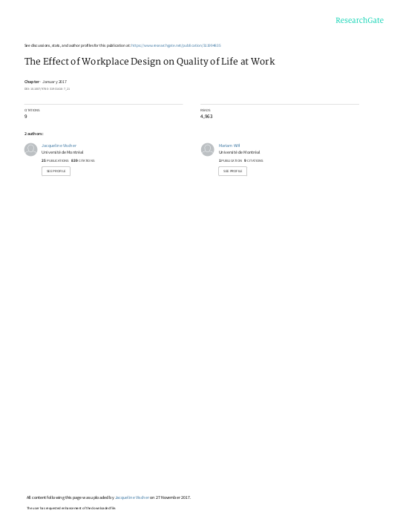
- Report year:2017
- Report author: Jacqueline Vischer, Mariam Wifi
- Organisation: University of Montreal
Since the 1980s, research has studied the ways in which people are affected both ‘objectively’ and ‘subjectively’ by their physical environment at work. At that time, the concept of Quality of Work Life (QWL) evolved to promote improvements in the Quality of Life (QoL) of workers, in which the effects of workspace design and environmental features on worker morale and productivity were emphasized.
QoL research has developed a variety of ways of measuring how well human wants and needs are met. This chapter examines how meeting building users’ environmental needs at work contributes both to better workspace design and to an improved QoL for workers. Studies of environmental quality at work indicate effects on a number of dimensions affecting workers’ QWL. As research knowledge accumulates on environmental quality (EQ) – the range of ways in which workers are affected and respond to environmental conditions – the connection is made between EQ, QWL and QoL. Both objective and subjective measures are used to assess all three, and people’s perceptions are a critical factor in both the person-environment relationship and the QoL experience.
QoL research has developed a variety of ways of measuring how well human wants and needs are met. This chapter examines how meeting building users’ environmental needs at work contributes both to better workspace design and to an improved QoL for workers. Studies of environmental quality at work indicate effects on a number of dimensions affecting workers’ QWL. As research knowledge accumulates on environmental quality (EQ) – the range of ways in which workers are affected and respond to environmental conditions – the connection is made between EQ, QWL and QoL. Both objective and subjective measures are used to assess all three, and people’s perceptions are a critical factor in both the person-environment relationship and the QoL experience.
